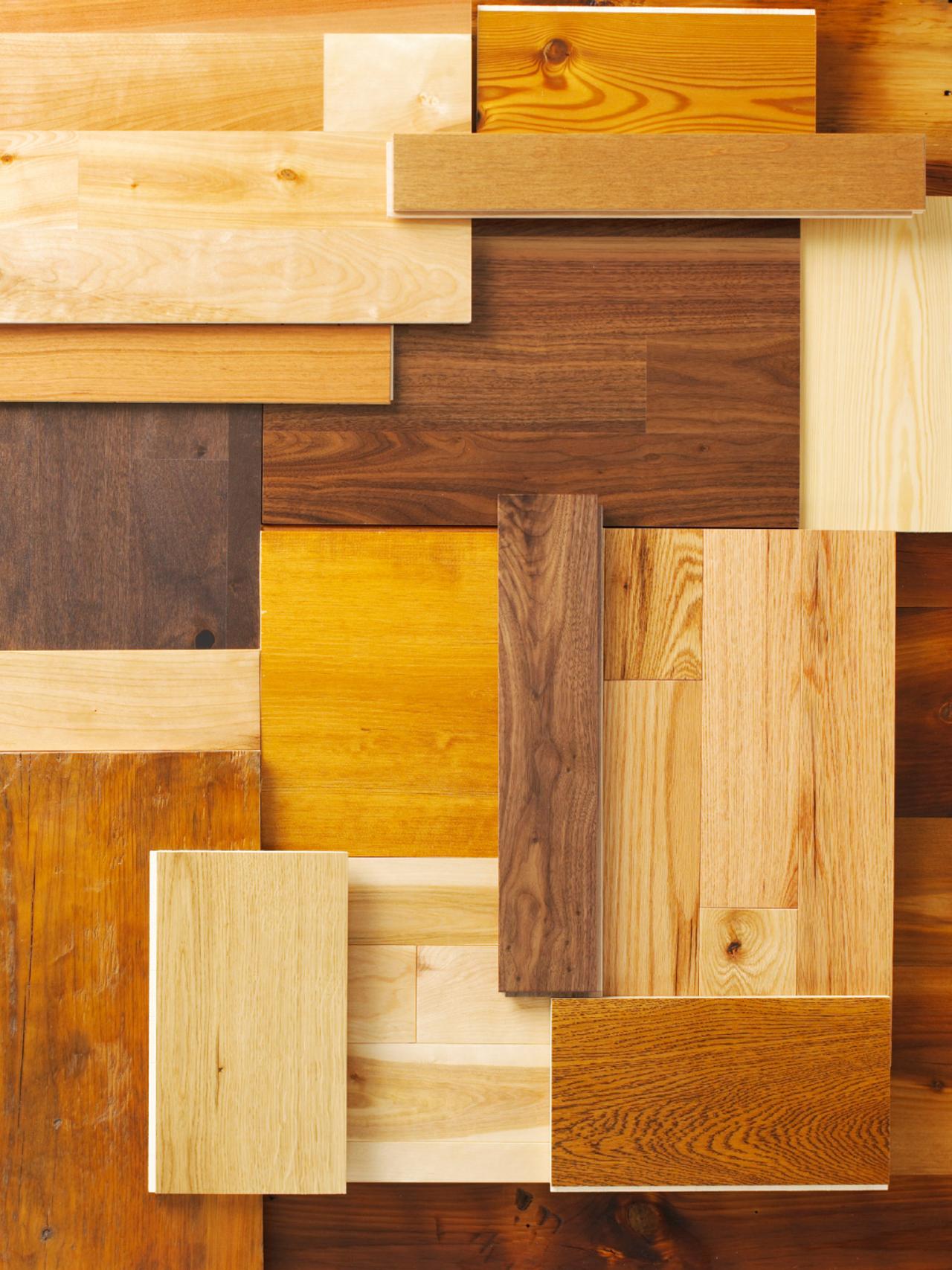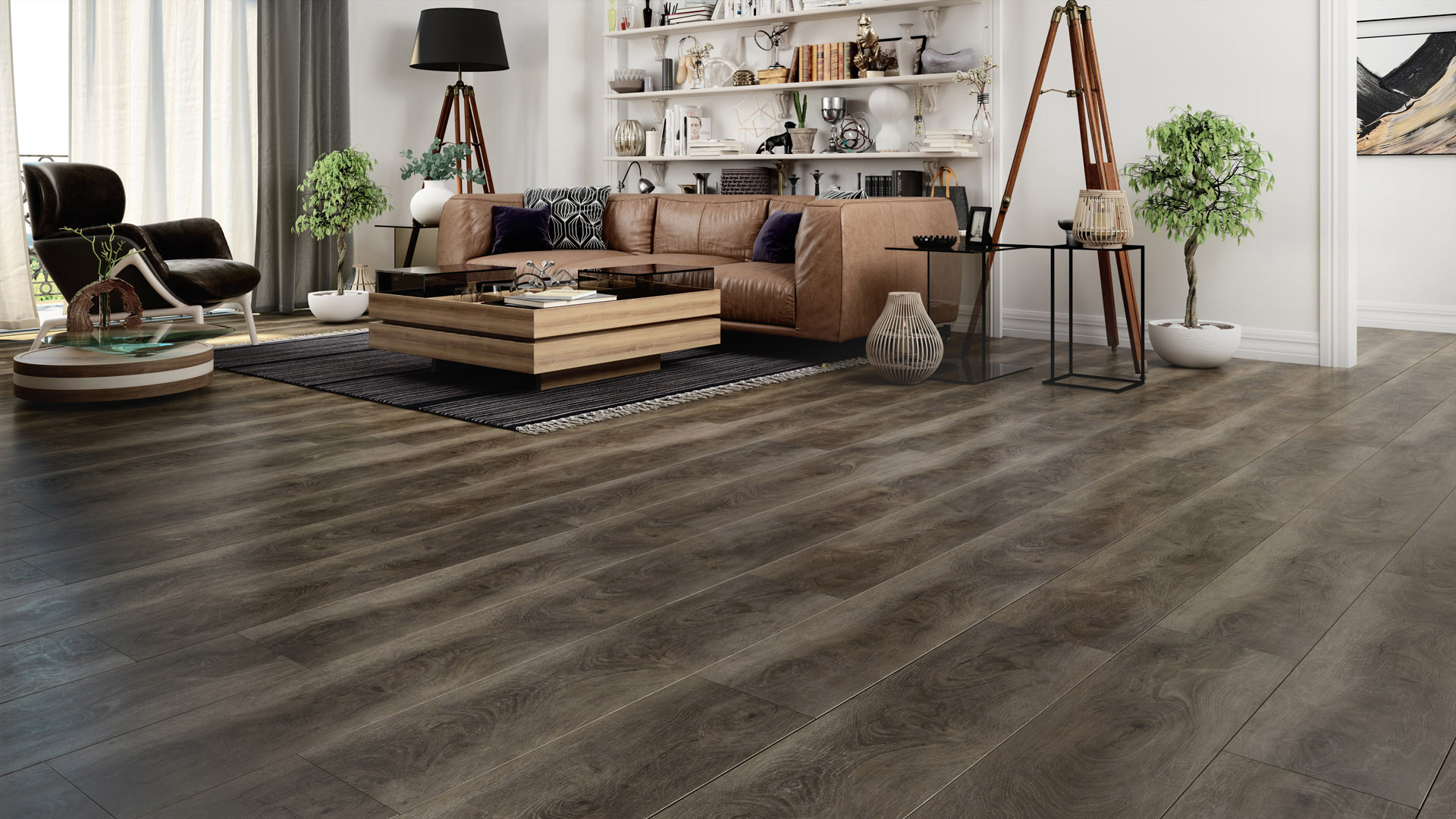I don’t know about you, but when I search online for information about the types of hardwood floors available I’m expecting more than just a couple of hundred words about solid hardwood vs engineered hardwood flooring!
If I’m going to consider making a large financial investment in new wood flooring I want to know about ALL the hardwood flooring types available before I make a decision. That includes construction types, different styles, colors, grades and finishes, as well as plank width and the types of wood floor installation.
We’ve been writing about and reviewing different wood flooring types for many years now and thought it was about time we put together a comprehensive roundup of the hardwood information on our site. So, here is our complete guide to all the different types of wood flooring, with links to more detailed articles and guides if you want to know more about any particular aspect.
Hardwood Floor Construction Types
Solid hardwood is a timeless flooring material that remains very popular with homeowners who want the natural look, feel and aroma of real wood. Engineered hardwood brings the same ambiance but with a human touch of ingenuity that maximizes its usability.
Solid Hardwood: This material is pure wood from top to bottom. Many domestic wood types are used, with oak, maple and ash among the favorites. The market has welcomed a growing host of exotic woods from the world over to greatly expand your choices. Browse our solid hardwood flooring guides for general information about this material or to learn specifics about pricing, installation and maintenance.
Engineered Hardwood: This flooring, sometimes referred to simply as engineered flooring, has its pros and cons. It was developed for installation in locations where higher humidity levels would cause solid flooring to warp or buckle. The top layer is genuine hardwood – the same range of species used in solid wood flooring – that can be refinished, though not as many times. It is backed by multiple layers of wood material that tolerate the movement caused by normal humidity changes without being damaged. Our guides to engineered hardwood flooring provide comprehensive information that will assist you in determining if this is a better fit for some areas of your home.

Hardwood Floors: Finished or Unfinished?
While finished hardwood flooring offers convenience, some homeowners still prefer unfinished flooring. Here’s a look at the pros and cons of each hardwood flooring type.
Finished hardwood flooring: Prefinished wood, either solid or engineered, is turnkey material; you or the installer lays the flooring, and it is done. There’s no onsite smelly, time-consuming mess from finishing the floor. Most species of prefinished material are available in three to a dozen or more finish colors, so you certainly likely to find the shade or tone you want for your home.
If you decide on flooring finished at the factory, our guide comparing prefinished hardwood flooring with prefinished engineered flooring is a must read before you make your choice.
Unfinished hardwood flooring: There are a couple of common reasons for choosing unfinished flooring. The first is the cost savings that come from doing the work yourself, a savings that can amount to several dollars per square foot of flooring. Note that you will spend more money if you pay someone to finish your flooring after it is installed than you would have if you had purchased prefinished wood flooring.
Others simply enjoy the process of staining and sealing the wood – putting their touch on beautiful flooring they’ll enjoy for decades. Some homeowners love the wood type but aren’t satisfied with any of the available finishes or aren’t sure which will look best with their home decor, so they leave the finishing until the floor is in place and they can try a range of stain colors. If you’re still unsure about what finish is right for your flooring.

Hardwood Texture and Style Types
Here is an overview of the most attractive texture styles, so you can select the one that fits the vision you have for your home.
Traditional: If your idea of rich, natural beauty is smooth, uniform strips of fairly narrow flooring with a consistent tone throughout, then a traditional texture and style will surely meet your expectations. Traditional wood floors are classically elegant.
Distressed/Rustic: Wider planks lend a rustic look to any floor. Distressed wood has a weathered, well-used appearance that includes variable shades and tones with small dents and marks throughout. Together, wide and weathered features give rustic and distressed wood flooring a comfortable, “take your shoes off and relax” feel.
Reclaimed: Wood reclaimed from barns and old buildings has character that can’t be mimicked. If you want an eco-friendly floor with a history , one that exudes personality, and you are willing to pay a bit more for it, then reclaimed hardwood flooring is a the perfect choice.
Hand scraped: What was once the norm is now an appealing option, a reach back to the days of handcrafted wood flooring when each plank was hand planed rather than run through a power sander. Hand scraped wood floors show tooling marks, and these serve to give character and will help to hide the scratches and scrapes that are inevitable with time. It should be noted that some flooring labeled “hand scraped” is actually machined to give it the authentic appearance. Ask about how the wood is produced if you want hand-scraped wood truly produced by hand.
Wire brushed: Wire brushing of the wood opens and accentuates the linear wood grain by pulling some of the soft grain from the growth ring. A slight texture is created in the process that adds visual and tactile interest.

Plank Width Options
If you’ve browsed hardwood floor samples, you know that the width of the material affects its appearance and style. Here are your options and the styles they accommodate.
Strip: This term is used for flooring in the 2 1/4” to 3” range. Traditional wood flooring appearance is achieved using these relatively narrow boards, but modern, contemporary floors that emphasize linear styling employ narrow strips too.
Plank: Sometimes called plank wood flooring, it consists of planks in a range from about 3” to 6” wide, though there is no hard and fast rule on width. Depending on the tone of the wood and how it is textured, plank flooring is used in antique, rustic and country designs.
Wide plank: Boards up to 20” wide are available from some producers, but most flooring considered wide plank flooring is 6” to 10” wide. Wide planks create an Old World style and further enhance rustic and country schemes.
Parquet: Narrow strips of hardwood are used to create intricate geometric designs known as parquet flooring. The style was birthed in France and became popular throughout upper-crust European society. Parquet flooring lends a sophisticated, cultured appearance to any home.
Types of Wood Flooring Grade
Wood grade isn’t foremost about quality or durability; it refers to the appearance of the wood. Material taken from different trees or even sections of the same tree will contain varying degrees of knots, streaks, graining and other characteristics. The unique look of each type of wood grade determines what style of flooring it is best suited to.
High to Low Gloss Hardwood
How much do you want your floors to shine? You’ve got three primary types of gloss.
High gloss floors: This finish reflects a lot of light. A glossy floor sparkles in sunlight, but it has a significant drawback; it will show wear faster and highlight dust and debris more than lower-gloss sheen.
Low gloss or matte floors: The duller the finish is, the more the natural beauty of the wood is brought out rather than being masked by glare. Low gloss or matte floors also hide minor scratches and dust better than a high gloss finish. Long popular in Europe, low gloss finishes are now trending in the US.
Medium gloss floors: You’ll find the terms “satin” and “semi-gloss” used for finishes in this range. They represent a happy medium for homeowners who want a bit of sparkle in their floors but don’t want imperfections to be easily seen. These finishes are popular in prefinished hardwood flooring.

Light to Dark Hardwood
How light is right for your wood flooring to be? It’s completely a matter of choice. Here’s a look at your options and the vibe produced by each.
Light wood floors: Lighter tones provide a nice contrast to darker walls or furniture. Or, they can enhance the brightness of a room you want to have an airy, light feel. Light wood tones hide dust and scratches better than dark flooring. They also tend to make a room feel larger.
Dark wood floors: We’ve implied some of the negatives of dark flooring, especially when it is given a high-gloss finish– showing dust and imperfections and making a room potentially feel cramped. The upside to dark tones is a more elegant and substantial feel to them. And while a dark tone can make a small room feel crowded, it serves to draw together a large room or open floor plan. A richly toned floor beautifully sets off lighter area rugs, upholstery, cabinetry and wall colors. A matte or semi-gloss finish to dark flooring will accentuate the positive and diminish the problems.
Medium wood floors: In-between shades offer some of the best and worst of both light and dark. Additionally, medium shades tend to feel warmer and more comfortable than the others. They are a more attractive selling point than light or dark floors too.
Hardwood Floor Colors and Finish
One reason hardwood is so attractive is the range of natural color options you’ve got, even before stain is added. On the light side, whitewashed wood can be nearly white. Several other species have bright highlights too. Beiges and neutral-colored woods create flooring with versatile decorating possibilities.
There are natural wood colors all along the spectrum as it runs to tan, medium brown and dark brown. Once stain is added, almost any hue can be achieved. This allows designers and homeowners to create truly custom flooring to capture a trending tone, perhaps one not typically associated with hardwood flooring, or give the wood one of many classic finishes.

Hardwood Flooring Installation Types
There are three techniques used by installers to lay wood flooring. Nailing or stapling the material to the subfloor is the traditional method with the fastener installed through the side of the plank where it will be hidden by the next plank.
The second technique is to glue the hardwood flooring to the subfloor. Gluing is used mostly with engineered hardwood floors, and it is important to use the adhesive and trowel type recommended by the manufacturer or risk voiding the warranty.
Finally, hardwood can be installed as a floating floor. Material suitable for this method is produced with tongue and groove design. Some require a bead of glue to be applied to the groove, while others have a click-lock design that eliminates the need for glue and speeds up the installation process.





